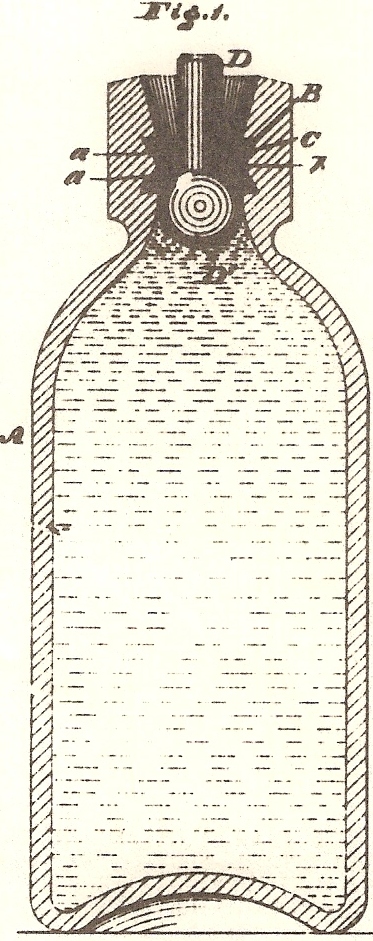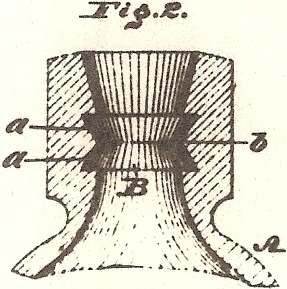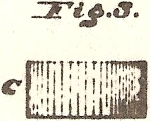William L. Roorbach Bottle Stopper



William L. Roorbach’s
patent application was filed December 22, 1883 and specified:
I, William L. Roorbach…of
Figure 1 is a vertical section of a bottle and stopper
embodying my invention.
Fig. 2 is a view of a portion of the bottle, the stopper being removed.
Fig. 3 is a side elevation of the seat of the stopper…
This invention relates to that class of
bottle-stopping devices in which an internally-grooved neck is used in
combination with packing for its groove and a globular stopper extending
below the same.
Referring to the drawings,
A represents a bottle, in the
neck of which is a double horizontal groove,
B, which has two inclined
faces, a a, the inclinations
being respectively from the top and bottom walls of the groove toward
the interior of the neck of the bottle, and forming at their junction a
ridge, b.
C represents a
rubber bushing or packing, of an annular form, the diameter of which is
greater than that of the ridge b,
the said bushing being forced around the ridge, so that its center is
compressed and the ends spread in opposite directions into the groove.
D represents the
stopper, which is formed of a stem, the bottom of which has a spherical
head or bulb, D, the diameter
of the latter being less than that of the neck of the bottle and ridge
b, so that the stopper may be inserted into the bottle prior to location
of the bushing, it being noticed that the stopper closes upwardly from
below against the bushing as a seat.
The bottle is filled and charged in any suitable manner, and the
pressure within the same holds the stopper firmly on its seat.
The increased pressure on the stopper increases the closing
action of the same, it being noticed that the seat part of the bushing
is conical and forms an elastic point of contact for the head of the
stopper, yielding under the pressure of the stopper without leaving its
bearings in the groove B.
Furthermore, the bushing is removed from contact with the
contents of the bottle as the lower edge of said bushing is above the
equatorial line of the head of the stopper, and thus not exposed below
said line. The bushing
remains firmly within the annular groove
B, and cannot be removed
therefrom by the upward pressure of the head of the stopper, as the
upper wall of the groove acts as a shoulder or stop, against which the
bushing abuts and restrains the same.
When the bottle is to be opened the stopper is forced downwardly,
thus overcoming the internal pressure thereon and causing it to leave
its seat, the effect of which is evident.
Comments:
This is the first of three inter-related patents filed by William L. Roorbach. He didn’t specify the material from which the stopper was manufactured or how it would have been moved into the mouth of the bottle after filling. We have yet to see any examples of this particular stopper and suspect he achieved very limited success at marketing it.
 HutchBook.com
HutchBook.com